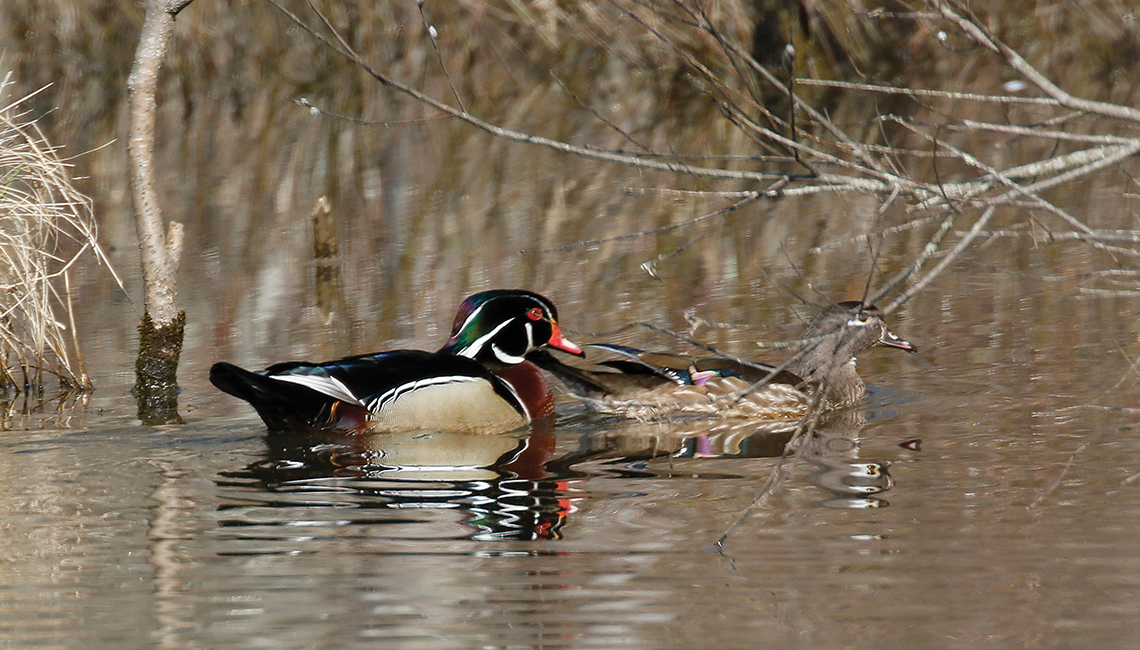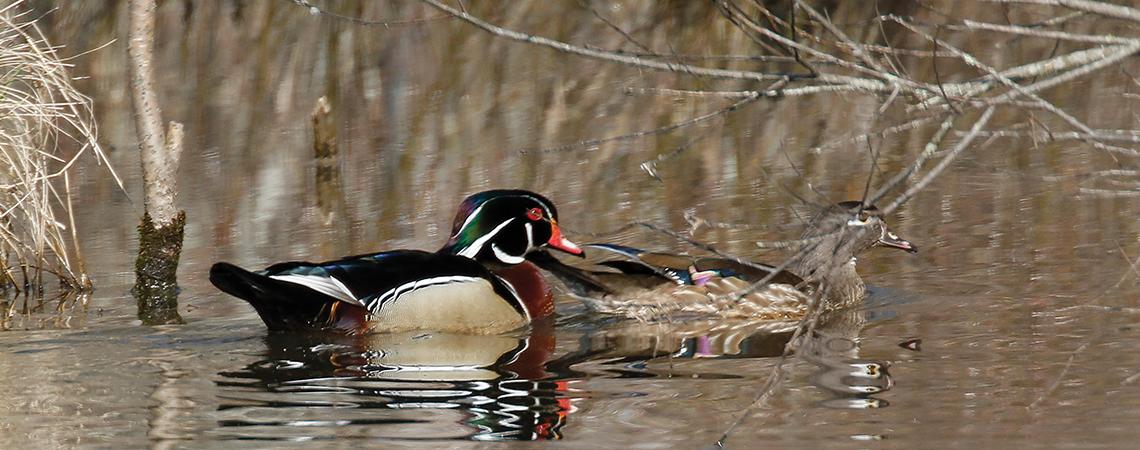Young wood ducks have a tough start in life. Hatched in a tree cavity 50 feet or more from the ground, they have less than a day to rest and dry their downy feathers after fighting their way out of the eggshell before their mother decides it’s time to leave the nest.
Flying down to the base of the tree, the female woody begins calling to her brood of possibly a dozen or more ducklings. Hearing her voice, they react instinctively: One at a time, they climb to the edge of the nest hole and launch themselves into the air. Weighing only a few ounces and still two months from being able to fly, a duckling tumbles end over end, hits the ground — hard — but bounces up like a little ping-pong ball and scurries to its mother.
If a wood duck survives the many dangers it faces as a duckling (and it’s a male), it grows up to become one of the most strikingly beautiful waterfowl in North America.
When the hen is sure that all her offspring have gathered, she leads them quickly to the nearest stream, pond, swamp, or marsh. Though the ducklings are now safer than they were on land, they’re not yet totally out of danger. From below, a snapping turtle or largemouth bass would like nothing better than to make a meal of an unsuspecting duckling. From above, a great blue heron or other avian predator could easily take one as well.
But if a young wood duck survives those many dangers — and is a male — it will mature into one of the most strikingly beautiful waterfowl in all of North America. If female, its plumage will be grayish-brown, providing camouflage for next spring when it raises its own brood of young ducklings, usually in the same area it was reared.
Wood ducks — native to the Buckeye State — are doing quite well, with a strong population in Ohio, but that has not always been the case. During the 1800s, as Ohio’s virgin forests were cleared to make way for cities, towns, and farm fields, the natural nesting cavities in those giant trees disappeared, and the number of wood ducks plummeted. Some wildlife biologists even predicted the extinction of the wood duck by 1930.
Thanks to an aggressive nest-box program during the latter half of the 20th century, the wood duck was rescued from oblivion and its numbers restored.
Of course, that effort was spearheaded by the Ohio Department of Natural Resources, Division of Wildlife.
“Our staff installed and monitored wood duck nesting boxes — thousands statewide — near wetlands and ponds on both public and private lands in every county of Ohio during the 1980s,” says Mike Reynolds, executive administrator for wildlife management and research with the division. “Then we continued to distribute nesting boxes and plans to private landowners, which helped turn the tide and make this beautiful bird a common species once again in the Buckeye State. Today, both birding enthusiasts and waterfowl hunters are reaping the rewards of that remarkable recovery.”
Wood ducks also had a surprise ally in their fight to survive. As beavers — those large, extirpated rodents — gradually returned to the state after their own period of diminishing numbers, their constant dam-building created additional wood-duck-friendly wetlands.
Today the most numerous species of breeding duck in Ohio, wood ducks — as well as other migratory waterfowl — will be returning to the Buckeye State this month. Now, then, is the time to grab a pair of binoculars and get outside to enjoy them. Just appreciate while doing so that you will be seeing the tangible results of a successful wildlife recovery program accomplished many decades ago by a combination of wildlife professionals and private citizens working together.
Want to help?
If you’re a landowner with a pond, swamp, or other water area and would like to benefit wood ducks and other wildlife, you can erect a few nest boxes. Plans can be obtained by calling 1-800-WILDLIFE and requesting Nest Box Plans (Publication 419) or by visiting the Ohio DNR website.











